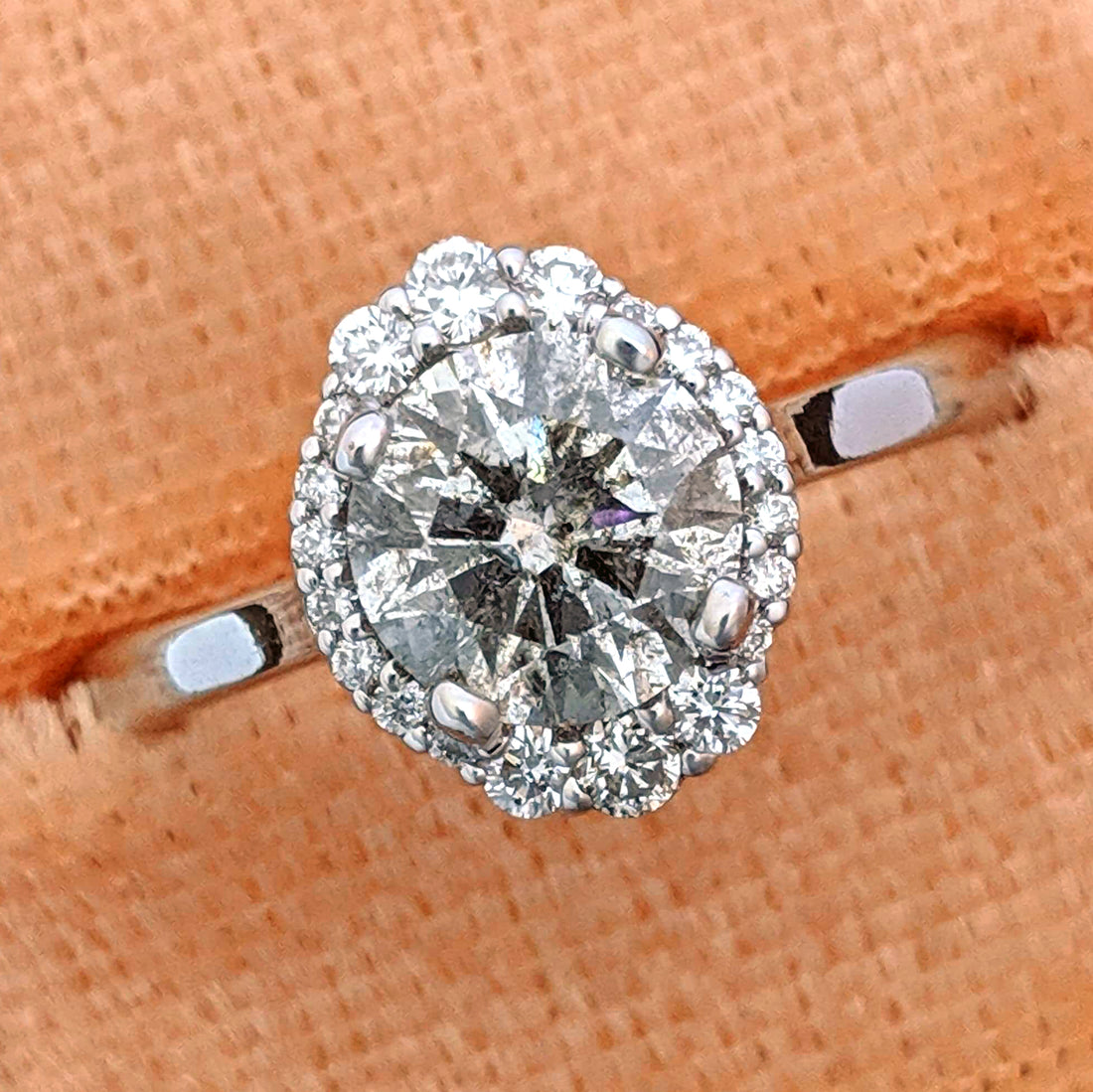
Finding Clarity with the 4 Cs
Jake FoxShare
Since the mid-1950s, the Gemological Institute of America (GIA) has provided us with a handy chart breaking diamond clarity down into six easy categories from Flawless to Included, but there is one big misconception: That chart doesn't always tell you what the diamond looks like!

Okay, to let's be clear (pun intended).
The diamond clarity scale does a good job of classifying diamonds into categories based on the type, quantity, and placement of their inclusions. What it does not do is tell you whether or not those inclusions can be seen with the naked eye.
In fact, you can go online and fine GIA's article "Seven Things to Know About Diamond Clarity" where they plainly tell you themselves "Eye Clean... is an industry term... GIA does not use this term."
There are a few reasons for this.
How clean is clean?
First, eyesight is highly subjective. Some people see better than others. On top of that, the lighting, environment, and even your physical condition can all play a roll in what you can see.
Second, not every diamond is cut the same way. A brilliant cut such as round and oval diamonds is often much more forgiving than a step cut such as an emerald cut or baguette, even if the size and placement of the inclusions is similar.
Larger diamonds tend to show inclusions more easily as well.
If I am presented with two one carat SI1 graded diamonds, one a round and the other an emerald cut, there is a very good chance that the inclusions will be invisible int he round, and prominent in the emerald cut. Each diamond is graded using the same set of rules, so if the rules don't change, then clearly the rules aren't based upon the concept of "eye clean."
Quoting from a Journal of Gemmology article entitled "Objective Diamond Grading":
"Determination of the overall impact that inclusions have on the clarity grade is influenced by up to five factors: size, number, contrast (colour and relief), position and nature."
This is also all assuming very specific conditions. The diamond should be graded face up, and by:
"a skilled grader working with 10× fully corrected magnification (loupe or microscope) and effective illumination (diffused horizontal lighting with a loupe or darkfield illumination with a microscope)."
Those are very specific factors and conditions.
Nowhere in those criteria do we find mention of a salesperson looking at a diamond with a cheap loupe under the track lighting in their studio, let alone any mention of an unaided eye.
If you go back to GIA's own notes on the scale, you'll notice the entire scale assumes 10x magnification. (Technically, it assumes the rest of those conditions as well: Proper training and lighting, et al.)
The "included" category does not say "visible to the naked eye", it says "obvious under 10x magnification - and often visible with the unaided eye."
Finally, it is worth noting that these grading standards are not a universal truth. They rely on human training and discernment. Different laboratories and different shops have different grading cultures, and will not always grade in the same manner. If the same diamond is sent to GIA, EGL, and IGI for grading there is a good chance you will receive three different grades.
How to shop for a diamond
What this means to you as a shopper is that the focus should be less on the diamond's letter grade, and more on its actual beauty.
When we are asked to help find a diamond, the first thing we do is communicate to find out what is most important to you. Some people are okay with a subtle imperfection if it means affording other more significant benefits like a larger size or brighter color. Some want the rarity of a high grade like VVS1 or Internally Flawless, even knowing that the difference between that and a much lower grade might only be visible through 10x magnification.
While the grading scale won't tell you what is eye clean, that doesn't mean it's a guessing game.
We look at the types and placement of inclusions to determine what effects they will have on the beauty of the diamond. We review photos and videos before every bringing a diamond in, and then check it out in person before presenting it to our client.
On rare occasions, there may be a visually clean diamond in a lower category like SI2 or I1, which can mean significant price savings. In other cases, we may have to step up a grade or two to find what you are looking for. In either case, our goal is always to get you a diamond that you love IN REAL LIFE, not just on a piece of paper.
Are you ready to start your journey?
